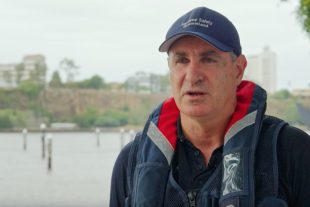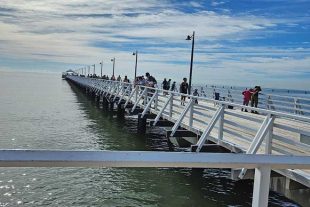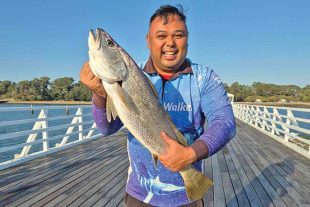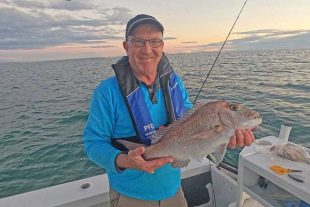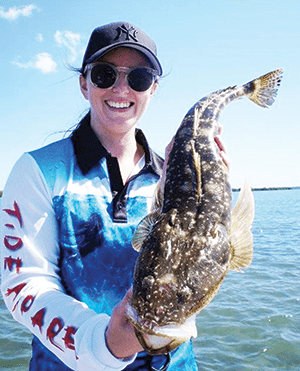
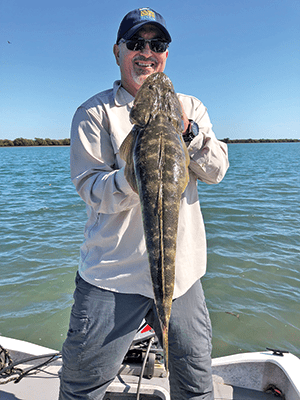
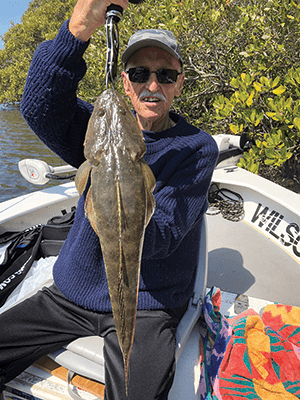
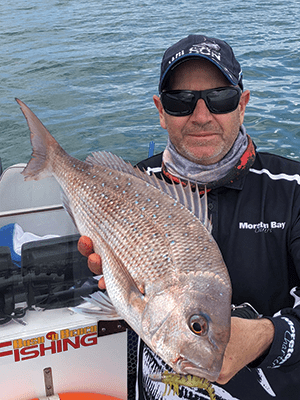
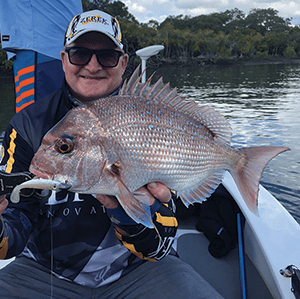
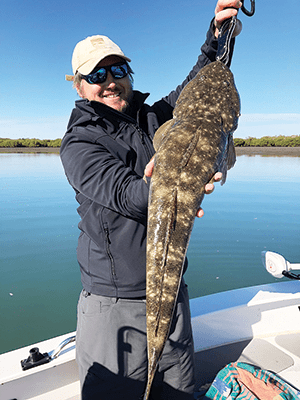



THE fishing has been pretty good over the past month and should continue to be so. Fortunately the good weather has outshone the bad.
Some snot weed is around, which is pretty normal for this time of year but nothing that can’t be dealt with. We’ve had both boats running charters this month, so we’ve been able to cover a lot of ground and have caught plenty of fish with bait, trolling hard-bodies and casting plastics around at the right parts of the tide.
By running two boats we’ve been able to cover a lot of ground, catching fish from out past Peel Island all the way south to the Jumpinpin area. We’re not pulling fish out of just one location, which tells me the fishing is quite good at the moment.
Most days we encounter a variety of species in each area, on different types of ground using different techniques. Hopefully this continues through October and onwards to Christmas (as long as the weather holds out!).
All the techniques work but over the past month trolling hard-bodied lures has been the standout.
This technique has hooked the better-quality fish and it didn’t matter whether it was jewfish, cod or flathead. Trolling hard-bodies is a great technique for weekend fishers if the conditions aren’t quite right for bait fishing or casting plastics.
Let’s say you have wind against tide, or the fish are not really on the chew but you can see them on the sounder. When trolling a lure you can use the boat to troll the lure in the direction you want (over the fish or the ground you’re trying to target), annoying the fish until eventually one of them takes a strike.
And usually it’s the biggest fish in the school. The other thing about trolling hard-bodies, no matter what fish you’re chasing, is you’re covering a lot of ground. This can make a huge difference when not a lot of fish are around, but as I said, you need to have the technique correct for the species you’re targeting (and this is the type of stuff I teach at my tuition days).
Another thing to remember is to match your lure colour to the water colour. I am amazed how different-coloured lures work at different times of year, and as the water colour changes I can see a colour that worked a month ago now catch nothing.
My golden rule is dark lure in dirtier water, clearer or lighter and brighter lure in cleaner water. Also ensure your line is in good order and you’ve got your knots down pat. Good fish will test your gear.
If you have been a bit sloppy and said to yourself “that knot will be all right” or you didn’t check your line to see if it was nicked, it could all end in disaster when that prize fish you’ve been chasing for years is lost beside the boat.
Always pay attention to the details. I see a lot of information on rods, reels, lures and techniques but the fundamentals can make the difference between catching fish and losing a cracker. Another thing that’s really important is a good-quality sounder, especially when trolling those deeper areas with a rubble bottom.
You need to know how to read it and what you’re looking at so you can spot fish and see when you’re over good bottom. Without that knowledge you’re just fishing blind. If you’re covering lots of ground when trolling, side scan is invaluable for seeing and marking things like wrecks, caves and bigger structure.
Remember we are now running two vessels. Warren (Wazza) is driving the 6m vessel catering to bigger groups of up to four people for bait and lure fishing, while I am running the smaller 4.3m vessel tailored to lure fishing and fishing tuition.
We have a new Facebook page to complement the Moreton Bay Fishing Charters page. Check out the new Bay and Estuary Guided Fishing page to see our recent catches. If you’d like to join us on a charter, call Warren on 0433 732 310 to go on the 6m boat, and if you’d like to join me on the 4.3m boat or learn more about our fishing tuition course called ‘Ticking all the boxes’, phone 0432 386 307.
After a trip with us you will have the knowledge to catch more fish, more often in Moreton Bay.
Until next month, stay safe on the water.
 Bush ‘n Beach Fishing Magazine Location reports & tips for fishing, boating, camping, kayaking, 4WDing in Queensland and Northern NSW
Bush ‘n Beach Fishing Magazine Location reports & tips for fishing, boating, camping, kayaking, 4WDing in Queensland and Northern NSW






